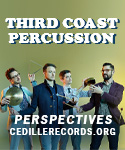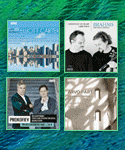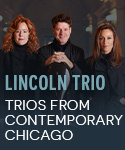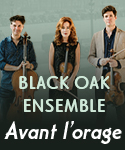Phyllida Lloyd, possibly better known by now as a film director (“Mamma Mia,” “The Iron Lady”), directed this production when it was new in 2002; Harry Fehr is credited as “revival director” for the June 13, 2011 performance from Covent Garden recorded here. Designed by Anthony Ward, the show looks as if it takes place in some “olden” time combined with abstraction. The costumes are mostly black, white, and red, with Macbeth in what looks like pantaloons (a semi-kilt?) and the witches with orange-red turbans and painted-on uni-brows, the latter making them look like insane versions of Frieda Kahlo or cartoon characters. The set is a dark, tiled wall at the back and on one side that opens and closes to change scenes and to offer moody cyclorama sky effects.
A gold cage is used as a throne room–I think it’s a metaphor but I wouldn’t swear to it. Birnam Wood consists of bare, red branches–blood dominates this production (we see the murder of Macduff’s children), so red isn’t a bad color for trees. Instead of a dagger to frighten Macbeth in Act 1, a huge door slips open and a white slash of light crosses the stage. In the Apparition Scene (Act 3), the future kings are solid gold. These are stunning moments in what is otherwise a rather static event, with no banquet and Banquo lying on the floor in full view, later apparently rising up to scare Macbeth. And whoever is credited with stage direction seems absent: the characters are pretty much left to their own devices. It’s murkily thought out.
There is nothing murky about the musical end of the show, however, and that mitigates whatever drama is not quite happening physically. Anthony Pappano remains the go-to man for Italian opera; he even turns Verdi’s rum-tum-tum moments into suspense and urgency and makes us forget that this mostly forward-looking work was composed during his “galley” years. Pappano uses the composer’s 1865 additions but allows Macbeth’s final aria from the 1847 edition as well. It’s a dark score and Pappano gives us the weight of the situations; he keeps the music moving and lets the double basses and brass have a wonderfully gloomy field day.
Assisting him in the drama is our Macbeth, the superb singing actor Simon Keenlyside. Arguably not the possessor of the juiciest of baritone voices, he nonetheless embodies the tormented character perfectly. He moves alternately stealthily and arrogantly, and is alert to everything going on around him. The voice has no trouble with the role’s high tessitura and his phrasing and sense of the Verdian line is peerless. His reading of Macbeth’s final arias renders the character a tragic figure.
Liudmyla Monastyrska, a name new to me, is the Lady Macbeth. Let us forget that she is awkward onstage, particularly in close-ups, and focus on her amazing voice: Apparently nobody told her how difficult the role was. She sails through the two-octave leaps, emits blazing high Bs and Cs, and produces a sound that is absolutely even in weight and texture from top to bottom. She handles the coloratura splendidly (occasionally substituting staccato effects for legato, but why bicker?) and sings off the text. Her gigantic (as in Ghena Dimitrova-type gigantic) sound is easily and musically scaled back, and her Sleepwalking Scene works as well as her more vitriolic outbursts. Get her an acting coach, teach her to interact with her leading man, and we’ve got a stupendous new, grand spinto.
Raymond Aceto’s Banquo is sonorous and sincere, hampered only by the staging of the (non) Banquet Scene, and Dimitri Pittas sings his aria with heart and Verdian shine. The rest of the cast, orchestra, and chorus are absolutely first-rate.
Picture and sonics are 21st century excellent; subtitles are in all major European languages; a nice bonus features Pappano in rehearsal. This DVD is second choice: the 1987 Verrett/Nucci/Chailly performance on DG is still sui generis, even though it’s a film and not a “live” show. But I wouldn’t want to do without either, even given the “blah” production values in this new, Covent Garden production.
































